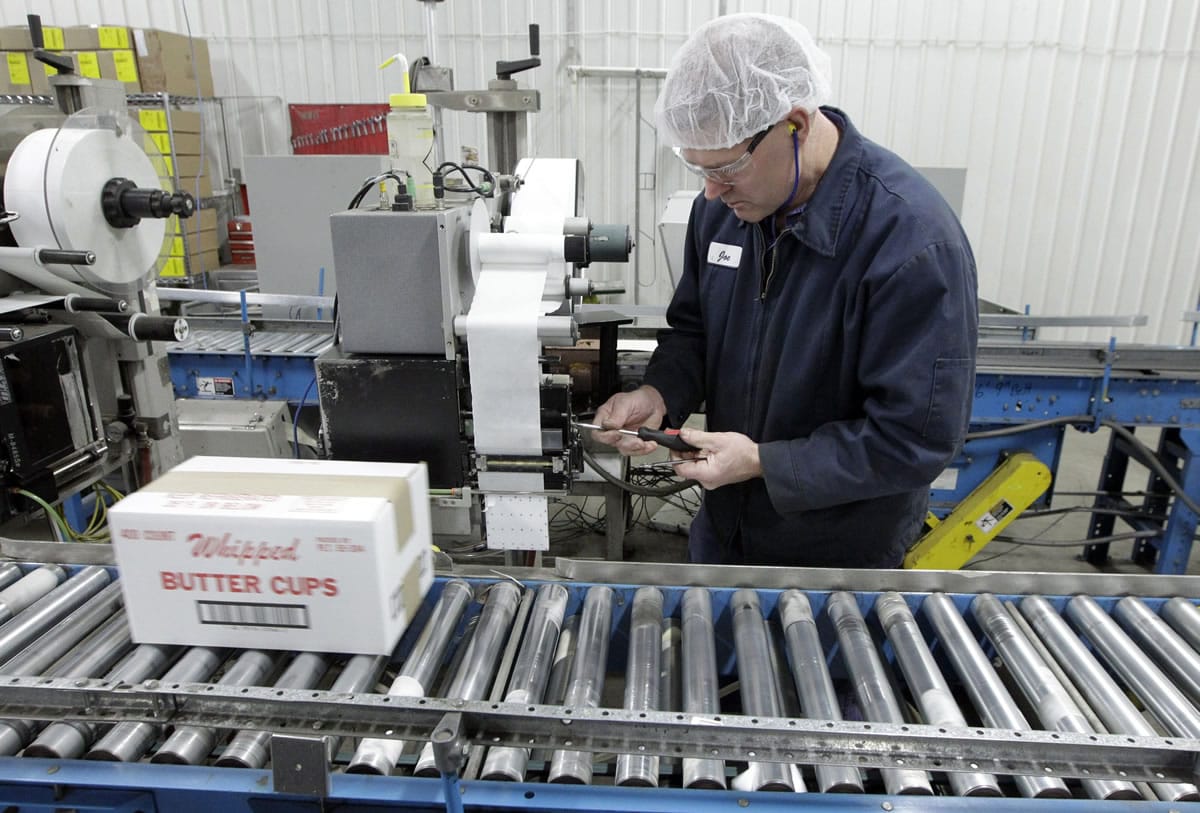GREENWOOD, Wis. — Butter is back.
Driven by the movement toward food that contains natural ingredients as well as the foodie and gourmet cooking trends, butter consumption in the United States has reached its highest level in 40 years, dairy industry leaders say.
Where margarine and other spreads were once hailed as healthier alternatives to butter, the pendulum may have swung back in butter’s favor.
In the middle of the trend is Grassland Dairy Products Inc. in Greenwood, whose plants make about a third of the nation’s butter. Grassland is the largest family-owned butter company in the United States.
“We’re busy,” said Trevor Wuethrich, a vice president at Grassland and the fourth generation of the Wuethrich family to work at the company, which was founded by John Wuethrich in 1904. “We’re definitely seeing butter consumption go up.”
Busy, too, is Al Bekkum, whose family-owned Nordic Creamery in Westby, Wis., is hard-pressed to meet demand for its butter. “At the end of the week — every week — our coolers are empty,” Bekkum said. “We just can’t keep up.”
This time of year is butter’s sweet spot. Estimates are that at least 40 percent of butter consumption in the U.S. takes place between Thanksgiving and New Year’s Day. That increase in demand is driven by holiday baking and Thanksgiving and Christmas meals.
Grassland begins gearing up for the holiday rush each year around Aug. 1, Wuethrich said.
“It puts stress on us from August to the first week in December,” he said. “There aren’t many vacations given during those four months.
“Butter’s perishable,” he added. “We can’t make it in January and put it away in the warehouse” until the holiday season arrives.
Bekkum sees the rush, too. “Especially this time of year, it’s just crazy for us,” he said.
During the past decade, Americans have increased their butter intake by 24 percent, according to the Wisconsin Milk Marketing Board.
“The last five years, butter has really taken off,” said Peter Vitaliano, chief economist for the National Milk Producers Federation, an Arlington, Va., trade association. And the growth in butter consumption is expected to continue.
Butter consumption has now reached 5.6 pounds a year per capita, up from its low point of 4.1 pounds in 1997, according to the Milk Producers Federation.
“The basic factors that we kind of see as contributing to particularly this recent surge in butter consumption, we don’t see any real change in that,” Vitaliano said.
“The price of milk that every dairy farmer gets paid is pretty much determined, under our current pricing system, by the market prices of four basic products: butter, nonfat dry milk, cheese and dry whey,” Vitaliano said. “The stronger the demand, the higher those prices are going to be in a relative sense. Every producer benefits when butter demand goes up.
“A strong butter market is very good news for all producers.”
Some of the increase in butter consumption is due to a shift in consumer preferences away from processed foods, artificial ingredients and trans fats derived from partially hydrogenated vegetable oils. The U.S. Food and Drug Administration last month began the process of banning trans fats from the American food supply.
“They (consumers) want to see something that is wholesome and not a lot of other ingredients in it,” said Marianne Smukowski of the Wisconsin Center for Dairy Research at the University of Wisconsin-Madison. “They are looking for something that is pure and good to eat.”
“Butter is as natural as you can get,” Wuethrich said. “It’s cream and salt.”
That doesn’t mean you should gobble down a stick of butter for breakfast every morning. Butter should be consumed in moderation as part of a balanced diet, dairy experts say.
Still, “People are starting to realize that maybe we better look at what we are actually putting into our bodies,” Bekkum said.
Bekkum’s company has introduced a line of flavored artisan butters including a garlic-and-basil butter. “It’s cream, salt, garlic and basil. Nothing else,” he said.
Those artisan butters have proven to be a hit.
Grassland is exploring markets beyond the U.S.
Demand for dairy-based proteins will continue to grow globally along with the growing middle classes in China and India, Wuethrich said.
Being in the middle of dairy country is great, but Wuethrich says the company sometimes faces challenges when searching for executive talent.
“The work ethic in our area is fantastic,” he said. “We’re trying to do a better job of retaining local talent. We go to the high schools and say, ‘Go to college. (But) you don’t have to go to Singapore or New York'” when it comes time to graduate and choose a career.
“You can come home and have that same job that you think you’re going to get in the big city,” he added. “We’ve made a grass-roots push on that the past couple of years.”
There are plenty of opportunities for everyone from chemists to engineers, Wuethrich says.
The company processes about 5 million pounds of milk per day.
“We employ about 450 people, and we buy milk from 850 farmers,” Wuethrich said. “Those are all generally local people. We do feel pretty proud that we’re a large employer to the community.”
The company has been expanding into areas such as milk protein isolates as technological developments continue and worldwide demand for protein grows.
Butter, though, is still the company’s core product.
“I am blessed to be a fourth-generation butter maker,” Wuethrich said. “When you’re a fifth-grader and they ask you in school what you want to be when you grow up, not many kids are raising their hands and saying, ‘butter maker.'”



